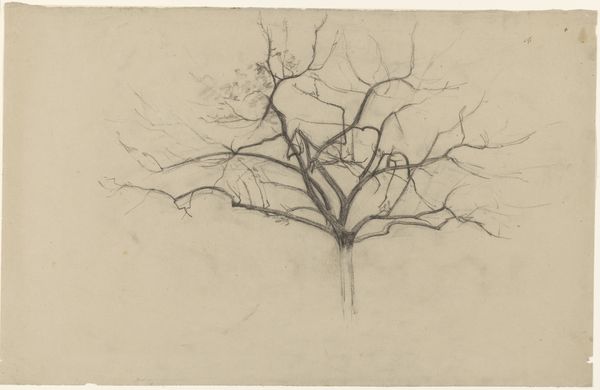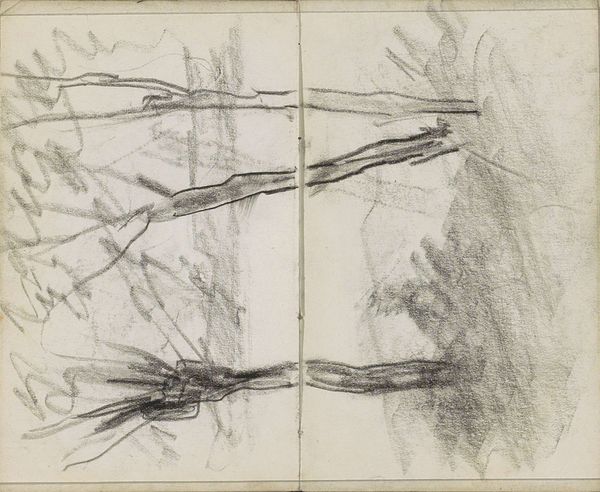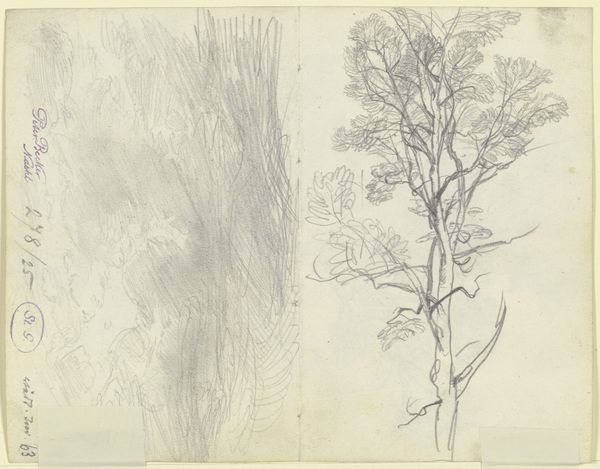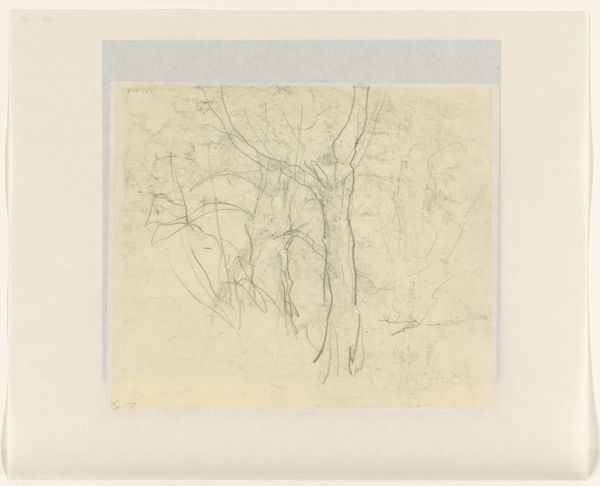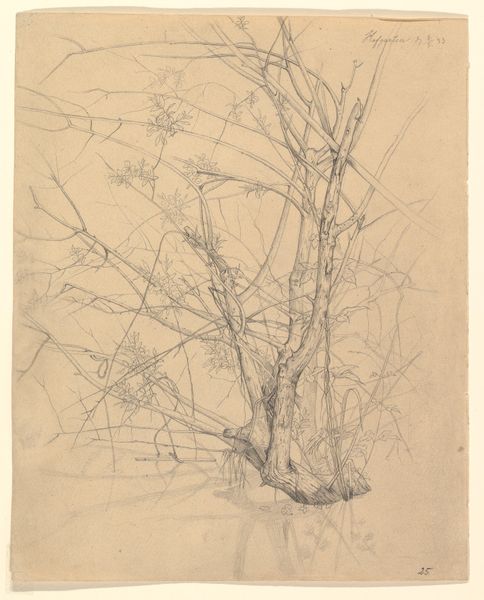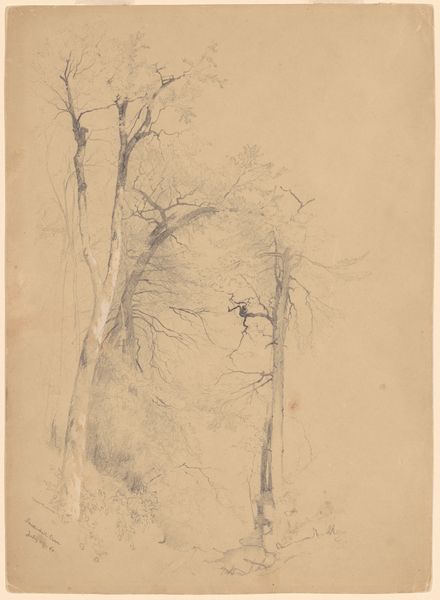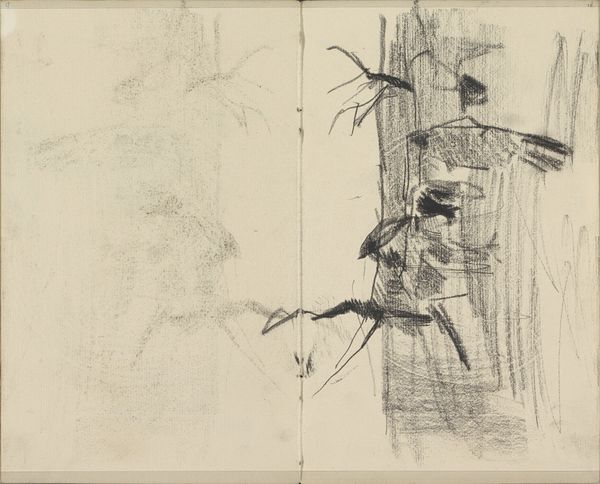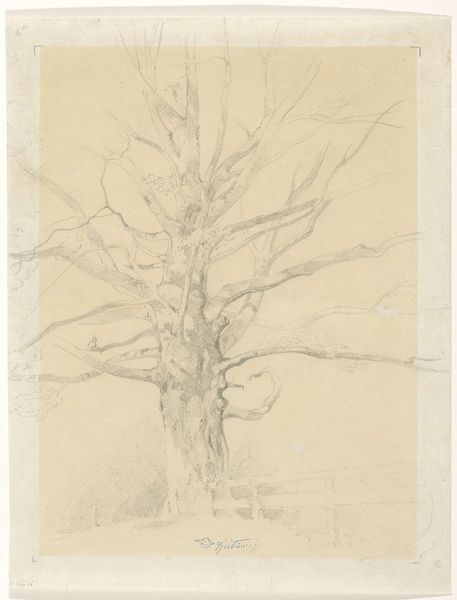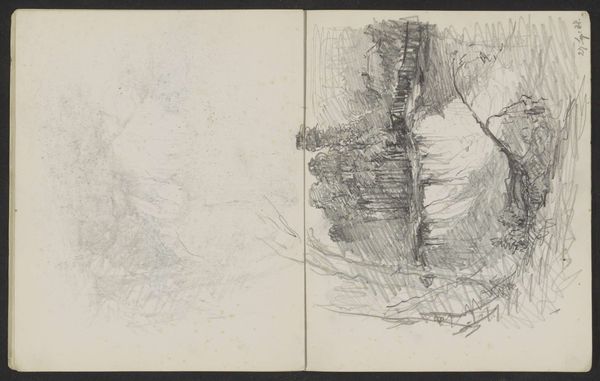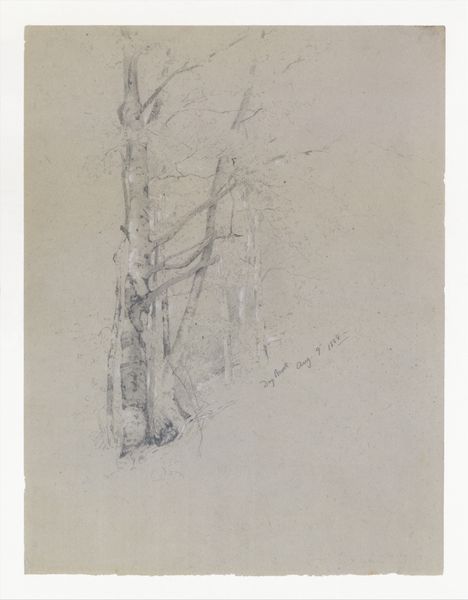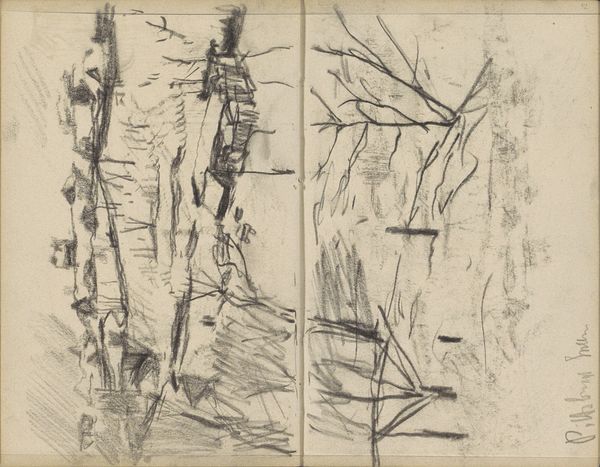
drawing, graphite
#
drawing
#
impressionism
#
landscape
#
graphite
#
realism
Copyright: Rijks Museum: Open Domain
Curator: Breitner’s drawing, dating from between 1880 and 1882 and titled *Boom*, which simply means “tree” in Dutch, is an intriguing graphite sketch from the Rijksmuseum collection. What strikes you first about it? Editor: Starkness, definitely. The skeletal form of the tree, presented in graphite, feels like a raw, almost melancholic observation. It brings to mind ideas of fragility. There's a vulnerability in how exposed it is. Curator: That vulnerability you sense is potent. Knowing Breitner, his landscapes were rarely just about capturing scenery. Instead, he found a language of feeling, and his approach anticipated modern art's interest in representing psychological landscapes. It’s fascinating to observe these impressionistic tendencies. Editor: Exactly, Breitner positions us to consider what the image communicates about both human activity and human affect. I think about its place in the late 19th century, amid rapid industrialisation. In a lot of ways, it anticipates current-day ecological concerns and could represent humanity’s fraught relationship with nature as a finite resource. Curator: I find the drawing's realism equally poignant, especially in its detail despite the economy of lines. He is sketching on both sides of the journal, so there are two separate attempts that allow us to trace the process of art making and his eye as it investigates. There’s something deeply affecting about seeing a thing come into being. Editor: Right, and there are multiple, interconnected contexts we can analyze to come to new understandings, including impressionism's focus on fleeting moments, or, like you say, just witnessing an artist observing and grappling with a subject. Ultimately, "Boom" offers us space to pause, look, and reflect on interconnected ecological, social, and aesthetic relationships. Curator: Precisely. These stark trees seem to carry echoes of past, present, and perhaps, a cautionary glimpse into the future. Editor: Leaving us to decide, perhaps, if new growth is possible.
Comments
No comments
Be the first to comment and join the conversation on the ultimate creative platform.

